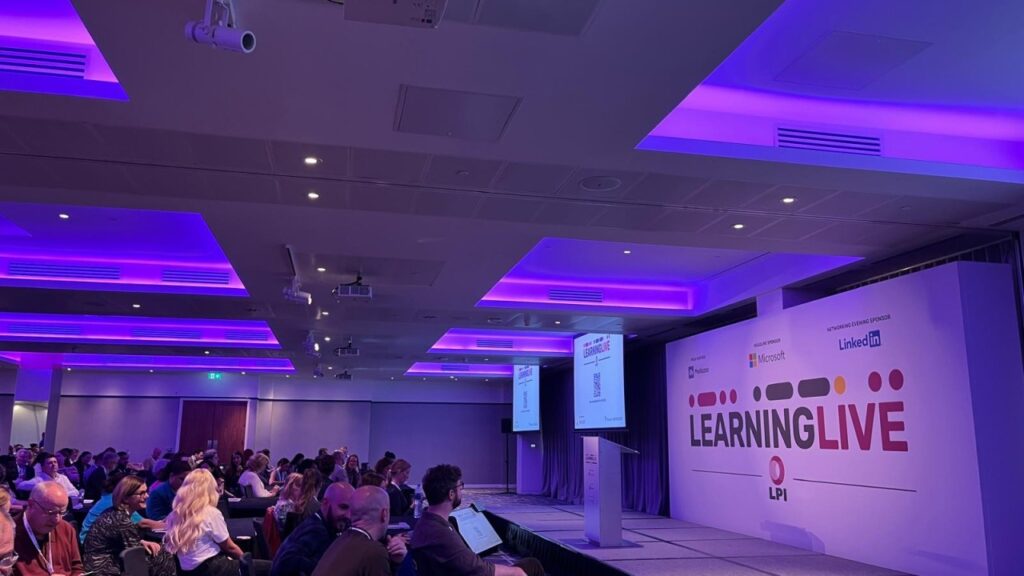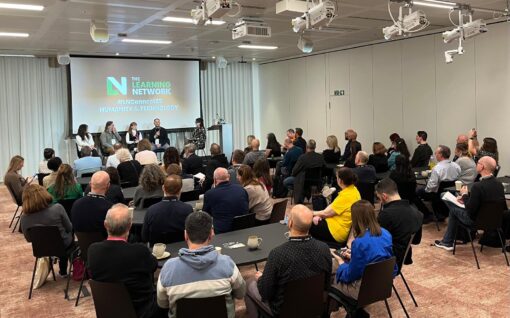Learning Live 2025: learning, leadership and high performance in the age of AI
Technology and AI integration, scalability and resource constraints, measurement and evaluation, culture and engagement and leadership and stakeholder buy-in. These are the challenges facing learning leaders today, based on insights gathered by the Learning and Performance Institute ahead of its annual Learning Live conference.
I read that list of challenges in two ways – one, the list represents an industry that is maturing. The second, that it is a profession teetering on the edge of crisis.
However you interpret them, these are precarious times for learning teams. Measurement and proving value have been key challenges for years and it is a concern that L&D continues to struggle with proving value. And hand in hand with that goes leadership and stakeholder buy-in – without it, L&D is vulnerable to being sidelined.
With that as the backdrop, the conference explored how L&D can navigate the changes it faces.
The keynotes reflected the focus on change and culture and that the key lever for success is learning. So, for all the challenges L&D teams face, it still has a critical job to do – learning helps organisations build the culture needed for innovation, change and improved performance.
Work and talent alignment
So how to do it? Many of the sessions focused on the need to move beyond creating learning for learning’s sake and shift to understanding employee challenges at work and building solutions to help them solve those problems.
As Alice Thompson, development partner international at M&S, admitted, “I didn’t understand the lived experience of the people I was designing for.”
Louise Goforth, LPI ambassador and founder of The Smart Partnership, agreed that there is an urgent need to shift to more of a performance consulting approach, “The urgency is clear: we must move from simply delivering learning to embedding true performance consulting. Only then can we create scalable, results-oriented solutions that deliver impact where it matters most.”
Simon Howson-Baggott, senior customer success manager for global clients at LinkedIn, urged delegates to align learning more closely to talent. Referencing this year’s LinkedIn Learning report, Howson-Baggott said 91% of L&D professionals agree that continuous learning is more important than ever for career success. But the research also shows that only 36% of organisations are career development champions – those organisations that are top performers when it comes to career development.
He asked delegates: “I wonder how many of you are connected with the talent professionals in your business and have worked with them to deliver on shared objectives across the organisation?”
Howson-Baggott said that leading companies are solving the skills crisis by making career development central to their strategy. These organisations are more confident in their ability to attract and retain talent, and accelerate generative AI adoption.
It is worth noting that the CEO of LinkedIn, Ryan Roslansky, is running Microsoft productivity tools such as Teams and 365. So expect to see learning embedded in tasks and being increasingly tied to talent (via LinkedIn).
Framing AI
Artificial intelligence was the number one challenge for delegates and a dominant theme. The conference sessions approached the topic in different ways.
At a practical level, KPMG shared its story of developing Microsoft Co-pilot to provide a chat interface to learning resources, enabling employees to access what they need through Microsoft Teams.
This involved having a deep understanding of workforce roles and tasks. Ian Barnwell, chief learning officer at KPMG UK, said “We needed to harness the power of AI to allow us to properly understand the roles that people do, their day to day job roles, the engagements that our people work on, and critically understand the content that we have and make that relationship between the roles and skills that people.”
After doing deep research to establish what employees needed to support them in their work, Barnwell and his team had to ensure the data was good enough for the AI to use. This is a challenge when you have years’ worth of content and resources, he told delegates.
“When you put modern AI tools in front of legacy LMSs and LXPs, where people have had free range to do what they like over the course of 10–15 years, nothing will expose the deficiency more—data quality—as quickly or as brutally as that. So we had to implement process, policy, procedure and tooling to fix the data quality issues that were affecting our tool’s ability to make personalised recommendations. So if you’re considering doing anything like this, data is your number one concern, and you can’t sleepwalk into a situation where you’re not on top of that because the tool just won’t work.”
The conversation was also philosophical. Futurist Katja Schipperheijn challenged delegates to consider the blurring boundaries between human and machine intelligence, one example being biological intelligence. It was a reminder that what used to be a vision of the future in films like the Matrix is becoming more a reality, raising many ethical questions for humanity.
Schipperheijn’s session was particularly thought-provoking for L&D leaders, according to Goforth. “She painted a future that is already catching up with us – where the line between the artificial and the deeply human continues to blur. Her challenge to learning leaders was clear: dare to see the world through the eyes of those who will inherit it.”
Culture and performance
High performance was another central theme. Drawing on insights from hundreds of interviews with elite performers, the hosts of the High Performance podcast (presenter Jake Humphrey and visiting professor Damian Hughes) argued that employees need environments where they can learn, fail safely and grow.
The keynote was a Q&A with the audience and the questions revealed what learning leaders are most concerned about: balancing ambition with mental health, sustaining motivation while avoiding burnout, and creating cultures that enable creativity without over-reliance on targets. The answers pointed towards culture as the differentiator. A high-performance culture is not about constantly stretching people but about psychological safety, kindness and space for curiosity.
Humphrey and Hughes said high performance is based on optimism and kindness: “Optimism is what allows us to be resilient and resilience is more important than talent. And the ability to learn faster comes from being kind to ourselves.”
At the end of the conference, I asked Goforth to share her take-aways. They are:
- A learning mindset is no longer optional – it is essential. It fuels individual growth, but more importantly, it transforms organisations
- Learning only sticks when it’s connected to purpose, grounded in reality, and embedded into the flow of work
- Optimism beats resilience. Resilience waits for the storm to pass, optimism sparks the light that helps people find their way through it.
Helping people work more effectively, learn new skills and helping organisations to change – there’s nothing new in that. What is new is that there is now a real urgency for L&D to show how learning can help individuals, teams and organisations embrace change and succeed and to be able to demonstrate that. It will be interesting to see what progress has been made at Learning Live 2026.


